Never Forget Ruben Salazar, ‘The Man in the Middle’
Ruben Salazar was a crusading journalist for the Los Angeles Times and television station KMEX until he was killed by a deputy sheriff’s tear gas projectile in East Los Angeles during the Chicano Moratorium march against the Vietnam War on Aug. 29, 1970.Ruben Salazar was a crusading journalist for the Los Angeles Times and television station KMEX until he was killed by a deputy sheriff’s tear gas projectile during a march against the Vietnam War in 1970.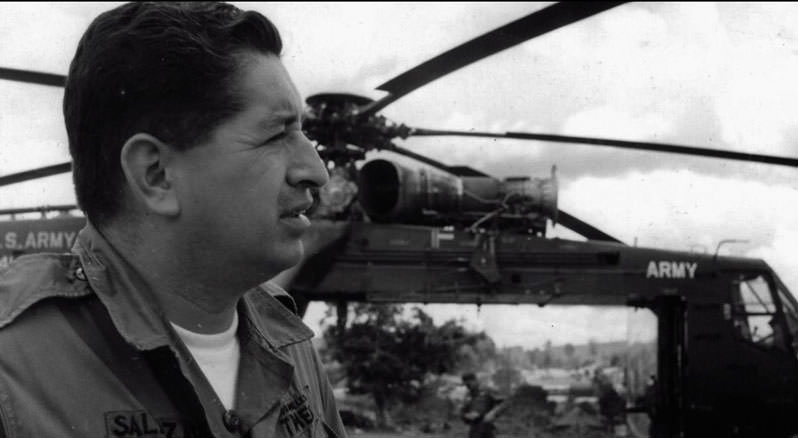 Facebook/Ruben Salazar: Man in the Middle
Facebook/Ruben Salazar: Man in the Middle
Facebook/Ruben Salazar: Man in the Middle
Ruben Salazar was a crusading journalist for the Los Angeles Times and television station KMEX until he was killed by a deputy sheriff’s tear gas projectile in East Los Angeles during the Chicano Moratorium march against the Vietnam War on Aug. 29, 1970.
His story is told in an insightful, moving and historically important documentary, “Ruben Salazar: Man in the Middle,” shown nationally on PBS and available for viewing here.
He was in the middle, caught between his Mexican-American heritage and his ambition to rise in a newspaper business that was dominated by whites and unsympathetic to Latinos. Filmmaker Phillip Rodriguez perceptively focused on this psychic struggle. In doing that, Rodriguez also drew attention to the personal travail of minority journalists trying to break into the white world, a subject too often ignored.
Last Monday, I drove to California State University, Los Angeles for a preview of the documentary. There couldn’t have been a better place to show it. From its campus in heavily Latino East Los Angeles, Cal State L.A. has produced generations of Latino leaders in education, law, health, business, government and politics, exerting influence that was only a dream when Salazar was killed.
I knew Salazar slightly in the early stages of his career when he was a reporter for the San Francisco News. I’d encounter him on the rare occasions my paper, the Oakland Tribune, sent me across the bay to cover a crime. In the 1960s, he moved to the Los Angeles Times where he was a general assignment reporter and a foreign correspondent in Vietnam, the Dominican Republic and Mexico. He returned to L.A. to cover the great social and political changes in the Latino community. Finding the assignment restrictive, he signed on as news director of the small Spanish language station KMEX and wrote a weekly column for the Times in which he became a powerful advocate for Latino Los Angeles and implacable foe of the educators who ignored Hispanics and the cops who brutalized them.
He was at KMEX and writing his column when I joined the Times. Although we chatted when we ran into each other, I didn’t know him well. But I understood what he was writing about. New to L.A. and looking for good political stories, I had begun to write about Latino politics, not with Salazar’s force and perception, but at least trying to give it a good effort.
Not until I saw “Man in the Middle” did I understand the mental and emotional toll his rise in journalism took on a person I had regarded as a sophisticated, confident journalist who had risen above the newsroom to a position of respect and authority.
He had married Sally, a white woman, and they raised their family in white, suburban Orange County. He wrote in his journal, made available by his family, that “Sally pointed out to me as we lay in the bed in the dark the other night that our two year old daughter would not have it easy in life. ‘She’s going to miss a lot of things because of her name. There are snobs, you know.’ I didn’t say anything. I pulled the covers around me and hoped that both of us would fall asleep. Why do I always have to apologize to Americans for Mexicans and to Mexicans for Americans?”
At the preview, which was sponsored by Cal State LA’s Pat Brown Institute, I talked to Rosalio Urias Munoz, who, as a student leader at UCLA, was co-chair of the Vietnam Moratorium march in 1970.
Munoz recalled Salazar roaming through the Latino community, learning about the bad schools in East L.A. and the police. His reporting on discontent with the schools, Munoz said, paved the way for the momentous 1968 Latino student strikes — the East Los Angeles “blowouts” — against dilapidated, overcrowded schools, bad instruction and counselors who assigned students to shop classes instead of college prep courses.
Salazar felt pressure from his Times editors to be evenhanded, if not bland. He got heat from Chicano activists to be tougher. Bill Drummond, an African-American reporter for the Times during this period and later a professor at the UC Berkeley Graduate School of Journalism, said the activists “wanted to exploit you, [feeling] that you were there to carry their water. I used to go at it all the time with the Black Panthers.”
Straight reporting didn’t satisfy Salazar. “I was frustrated,” he said in an old video clip in the documentary. “I wanted to communicate with the people I had been writing about for so long.” So he went over to small KMEX, which was aiming to increase its presence in the Latino community and began his weekly Times column.
“He stepped out of this rather confining persona representing the institution, and he began to talk about what he really felt,” Drummond said in an interview for the documentary.
Salazar, for example, said, “It’s foolish to think that eventually, we will melt into that mythical melting pot, which is a myth. We never will.”
According to Drummond, “People were shocked. They could not believe he was harboring these almost class-conscious thoughts. … Once you begin to tell the white man what you really think, it shocks him.”
Toward the end of the documentary, filmmaker Rodriguez digs into Salazar’s death with impressive, determined reporting that reveals more than has been known about the killing.
The peaceful march turned violent when sheriff’s deputies tried to break it up. At some point, Salazar and a colleague went into a bar, the Silver Dollar. A passer-by told the cops that a man with a gun was inside. A deputy fired two tear gas projectiles through a curtain that shielded the bar from the street. Two patrons escaped. Salazar was hit and killed.
Many veterans of the march believe Salazar was killed at the direction of higher-ups, possibly from the Nixon administration.
“From my point of view, it was premeditated,” moratorium march organizer Munoz said. He believes it was staged by people who wanted to silence Salazar as a means of stopping a growing national Chicano movement.
Rodriguez and his crew forced an unwilling sheriff’s department to open its long-sealed files on the case. They found the deputy who fired the fatal shots and interviewed him on camera. They also tracked down the passer-by who steered the cops to the Silver Dollar and interviewed him.
In the end, Rodriguez said, he talked to the owner of the bar, who happened to be an expert marksman. The bar owner told Rodriguez he thought the deputy, firing through the curtain, hit Salazar with “a lucky shot and that’s what I believe.”
In the absence of more evidence, that’s where the killing of Ruben Salazar stands, an unsolved mystery.
But the point of the film “Ruben Salazar: Man in the Middle” is not to solve a crime. It is to tell Salazar’s complex life story, which is also the story of the many minority journalists who struggled against huge odds and at great personal cost to report the harm racism has done to this country.
Your support matters…Independent journalism is under threat and overshadowed by heavily funded mainstream media.
You can help level the playing field. Become a member.
Your tax-deductible contribution keeps us digging beneath the headlines to give you thought-provoking, investigative reporting and analysis that unearths what's really happening- without compromise.
Give today to support our courageous, independent journalists.

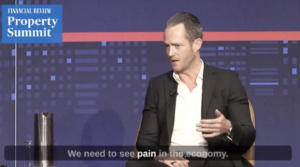

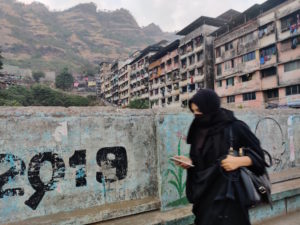
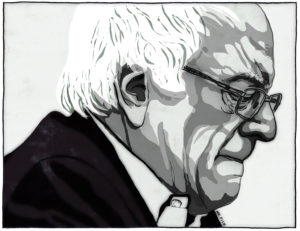
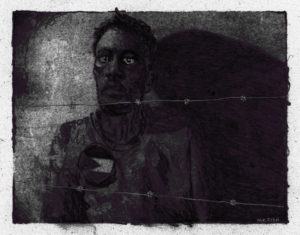
You need to be a supporter to comment.
There are currently no responses to this article.
Be the first to respond.